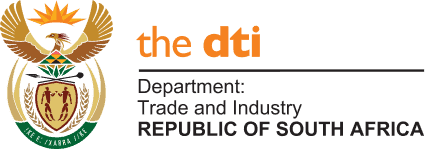By: Phomolo Lerato Makoele
I still remember the smell of the air as I stepped off the plane in Cape Town. It was a heady mix of dust, exhaust and spices, with just a hint of the nearby ocean. I was hit by the majestic sight of Table Mountain. I knew right away that this was going to be an unforgettable trip – due both to the international convening I was attending, and the city itself.
I immersed myself in the local culture, visiting markets and museums and exploring the city’s diverse neighbourhoods. As a mentee and young professional, I had the opportunity to attend Reimagining Heritage, Archives and Museums: Today/Tomorrow, which took place at the Homecoming Centre in District Six. This project consisted of three components, namely an international convening that was held in Cape Town, a series of professional meetings that took place in Johannesburg following the convening and a parallel mentorship programme.
The convening brought together experts from around the world to discuss new ideas and future approaches in the heritage, archives and museums sector. This convening was not just about the future; it was a reflection of the past.

Cape Town was an interesting and special place for me for several reasons. First, I was struck by the city’s diversity, both in terms of its people and its landscape. I loved seeing the blend of cultures and how Cape Town’s natural environment – the mountains, ocean and cityscape – seemed to come together in perfect harmony. I appreciated the city’s rich history, from its Dutch colonial past to its struggle against apartheid.
While in the city, I enjoyed the opportunity to attend an exhibition featuring famous South African Dr Esther Mahlangu’s artworks. Dr Mahlangu is globally renowned for her bright and vibrant paintings as well as murals with traditional Ndebele motifs and designs. The exhibition showcased Dr Mahlangu’s work beautifully and it was a great way to engage with the dynamic art scene in the city.

Ah yes, I so enjoyed visiting Salt River! This area has a flourishing community of artists. What fascinated me most during my stop in this area were the art galleries and showrooms that run along the streets of Salt River.

In addition to attending the convening, I was also able to attend a series of professional meetings in Johannesburg. The city’s fusion of past and present is what has caught my mind as I reflect on my experience in Johannesburg. The city has a complex history but it is still a vibrant and dynamic place with rich cultural experiences. It is where old meets new, tradition confronts innovation and the past complexities shape future possibilities. As I walked down streets and visited museums, I realised that this city is one where yesterday is inextricably linked with today.
This duplicity prevailed at the convening itself, which tabled heritage field challenges and opportunities for discussion. By attending both the convening and the professional meetings, I gained a lot of knowledge about Africa’s museums, heritage and culture, and innovative solutions that were introduced to address the challenges of the three sectors. I connected with professional experts in this field and built relationships for future collaborations.
Constitution Hill’s gates are still clear in my mind. The atmosphere was filled with history, and I felt the past bearing its weight on me. I could almost hear whispers of voices from a long time ago as if someone was talking into my ear. My heart broke as I visited the museum and read about the people who were imprisoned there. However, at the same time, I held hope and courage in my spirit while witnessing the legacy of those who opposed oppression that never diminished their efforts to end it. After touring the museum, I directed myself to the Constitutional Court. It held a lot of meaning for me. This court taught me about how it upholds South Africans’ rights and symbolises justice and equality to me. It demonstrates how history can be utilised to make South Africa’s future better than before.
My experience of heritage and museums in South Africa was one of discovery and learning. I noticed that South Africa’s museums and heritage sites are huge and complex; they are filled with facts and have so many stories to tell. Their museums and heritage sites are educational and interactive with a great deal of information provided about the past while in my home country, Lesotho, the museum sites are small, intimate, and located within a landscape with an individualized or local feel to it. The focus is mainly on culture and tradition. Museums normally exhibit traditional crafts among other things such as clothes for specific events or certain songs that are sung during formal occasions. Although South Africa and Lesotho are so different in their approach to museums, both offer an opportunity to understand the cultures and histories better.
I am so grateful to have had a chance to visit the heritage and museum sites in Cape Town and Johannesburg. These experiences helped me to understand more about South Africa’s history, culture and society and appreciate how diverse the country is. I would like to take this opportunity to acknowledge the support of the French Institute of South Africa, the Embassy of France and the South African partners without which this opportunity would not have been possible.
This story was made possible by the Reimagining Heritage, Archives and Museums: Today/Tomorrow mentorship programme that ran in February 2024, alongside the convening in Cape Town and professional meetings in Johannesburg. Initiated by the French Institute in South Africa and the French Embassy.






















